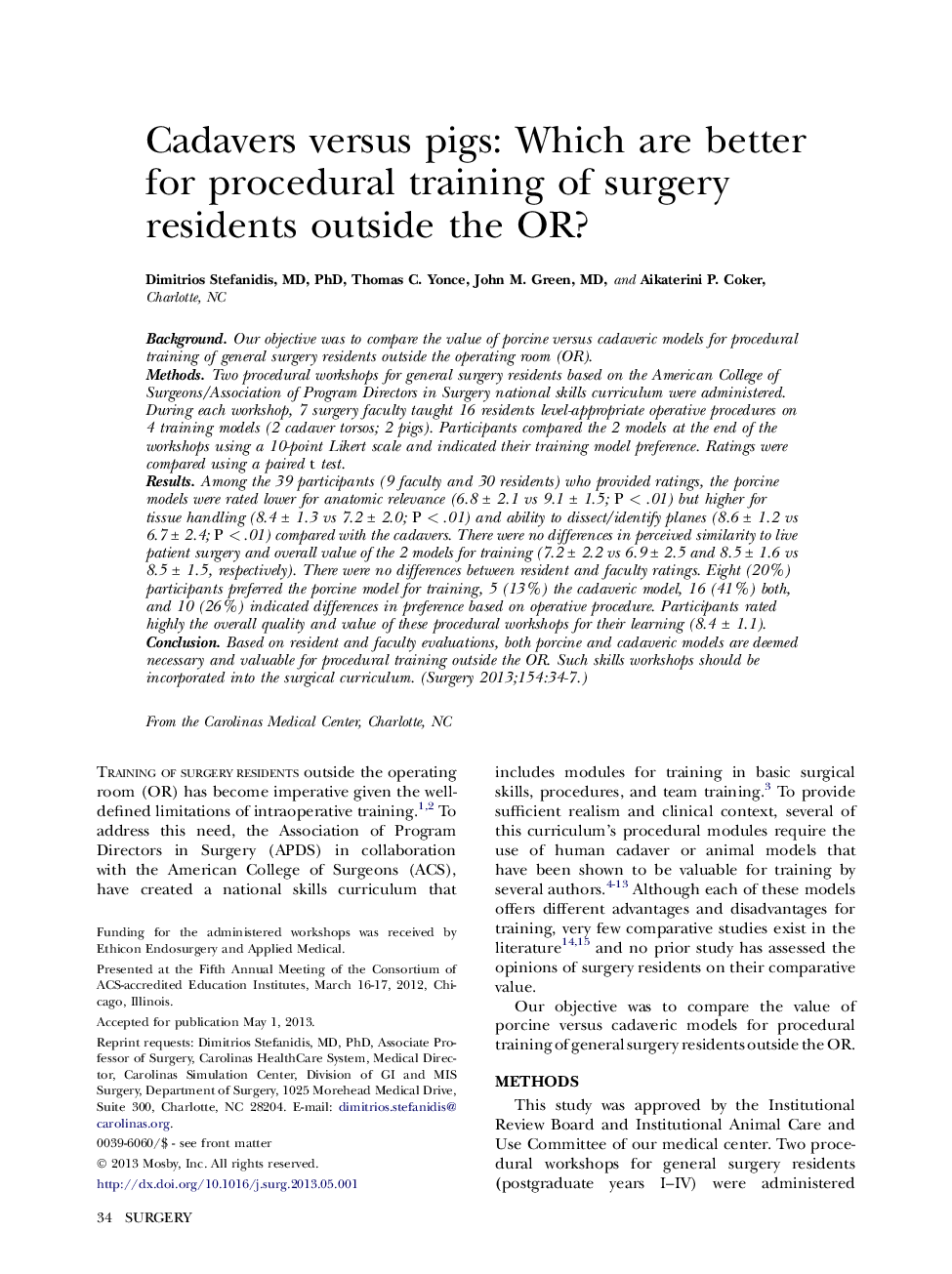| Article ID | Journal | Published Year | Pages | File Type |
|---|---|---|---|---|
| 4307344 | Surgery | 2013 | 4 Pages |
BackgroundOur objective was to compare the value of porcine versus cadaveric models for procedural training of general surgery residents outside the operating room (OR).MethodsTwo procedural workshops for general surgery residents based on the American College of Surgeons/Association of Program Directors in Surgery national skills curriculum were administered. During each workshop, 7 surgery faculty taught 16 residents level-appropriate operative procedures on 4 training models (2 cadaver torsos; 2 pigs). Participants compared the 2 models at the end of the workshops using a 10-point Likert scale and indicated their training model preference. Ratings were compared using a paired t test.ResultsAmong the 39 participants (9 faculty and 30 residents) who provided ratings, the porcine models were rated lower for anatomic relevance (6.8 ± 2.1 vs 9.1 ± 1.5; P < .01) but higher for tissue handling (8.4 ± 1.3 vs 7.2 ± 2.0; P < .01) and ability to dissect/identify planes (8.6 ± 1.2 vs 6.7 ± 2.4; P < .01) compared with the cadavers. There were no differences in perceived similarity to live patient surgery and overall value of the 2 models for training (7.2 ± 2.2 vs 6.9 ± 2.5 and 8.5 ± 1.6 vs 8.5 ± 1.5, respectively). There were no differences between resident and faculty ratings. Eight (20%) participants preferred the porcine model for training, 5 (13%) the cadaveric model, 16 (41%) both, and 10 (26%) indicated differences in preference based on operative procedure. Participants rated highly the overall quality and value of these procedural workshops for their learning (8.4 ± 1.1).ConclusionBased on resident and faculty evaluations, both porcine and cadaveric models are deemed necessary and valuable for procedural training outside the OR. Such skills workshops should be incorporated into the surgical curriculum.
